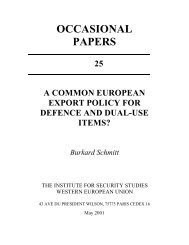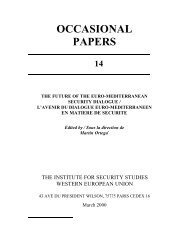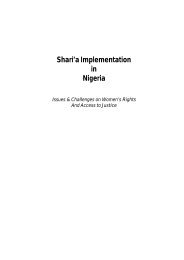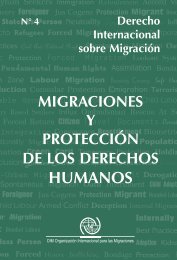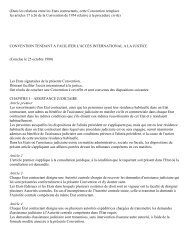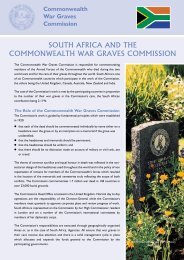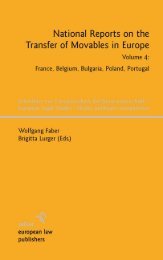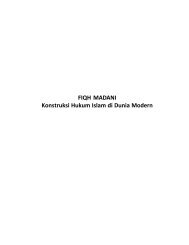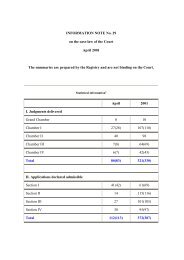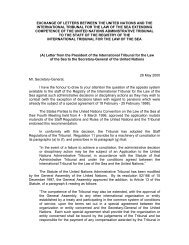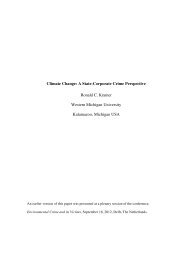Party Autonomy in International Property Law - Peace Palace Library
Party Autonomy in International Property Law - Peace Palace Library
Party Autonomy in International Property Law - Peace Palace Library
You also want an ePaper? Increase the reach of your titles
YUMPU automatically turns print PDFs into web optimized ePapers that Google loves.
C. Developments and Prospects <strong>in</strong> Europe and <strong>in</strong> European <strong>Law</strong> Projects<br />
What I will do here is describe where we came from with Article 12 of the<br />
Rome Convention 4 , how we started <strong>in</strong> 2006 with a Commission proposal<br />
on Article 14 on assignment, and how we struggled and failed. I shall<br />
f<strong>in</strong>ish with some thoughts about the future of Article 14 Rome I, and a<br />
short conclusion.<br />
7.2. Where we came from: the legal chaos under<br />
Article 12 of the Rome Convention<br />
In the 1970s, it took the negotiators of the Rome Convention a long time<br />
to conclude an agreement on a harmonised set of rules on the applicable<br />
law to contracts. The word<strong>in</strong>g of the Rome Convention has certa<strong>in</strong>ly<br />
not guaranteed a uniform <strong>in</strong>terpretation and application of the rules conta<strong>in</strong>ed<br />
there<strong>in</strong>. Still, the Convention was a big success.<br />
Therefore, the orig<strong>in</strong>al idea of the European Commission, at least its JLS<br />
section – Justice Liberty and Security – was to transform the Convention<br />
<strong>in</strong>to a Regulation without many changes, simply because Regulations had<br />
become the suitable <strong>in</strong>strument under the Treaty of Amsterdam. 5 Some<br />
amendments might have to be made <strong>in</strong> areas known to have caused problems<br />
<strong>in</strong> practice, but otherwise the rules should rema<strong>in</strong> more or less the<br />
same. 6<br />
4<br />
Rome Convention of 19 June 1980 on the law applicable to contractual obligations<br />
(80 / 934 / EEC), OJ L 266, 09 / 10 / 1980 p. 1-19, consolidated version<br />
30 December 2005, OJ 2005, C 334 / 3.<br />
5<br />
Treaty of Amsterdam amend<strong>in</strong>g the Treaty on the European Union, the Treaties<br />
establish<strong>in</strong>g the European Communities and related acts, OJ C 340, 10<br />
November 1997.<br />
6<br />
Look<strong>in</strong>g at Article 4 Rome I on the applicable law <strong>in</strong> absence of a party<br />
choice-of-law, it is clear that this Article has changed considerably as compared<br />
with Article 4 of the Rome Convention. The ‘hard and fast’ rules <strong>in</strong><br />
Article 4 of the Rome I Regulation serve ma<strong>in</strong>ly to meet the criticism of others<br />
with<strong>in</strong> the Commission (e.g. Internal Market), who thought that Private <strong>International</strong><br />
<strong>Law</strong> lacked legal certa<strong>in</strong>ty and predictability, and that it should<br />
better be replaced by mutual recognition based on the law of the country of<br />
orig<strong>in</strong>. In order to arrive at maximum legal certa<strong>in</strong>ty, the scope of the ‘closest<br />
connection’ rule <strong>in</strong> Article 4 of the Rome Convention has been narrowed<br />
down.<br />
146<br />
Paulien M. M. van der Gr<strong>in</strong>ten<br />
© sellier. european law publishers<br />
www.sellier.de



